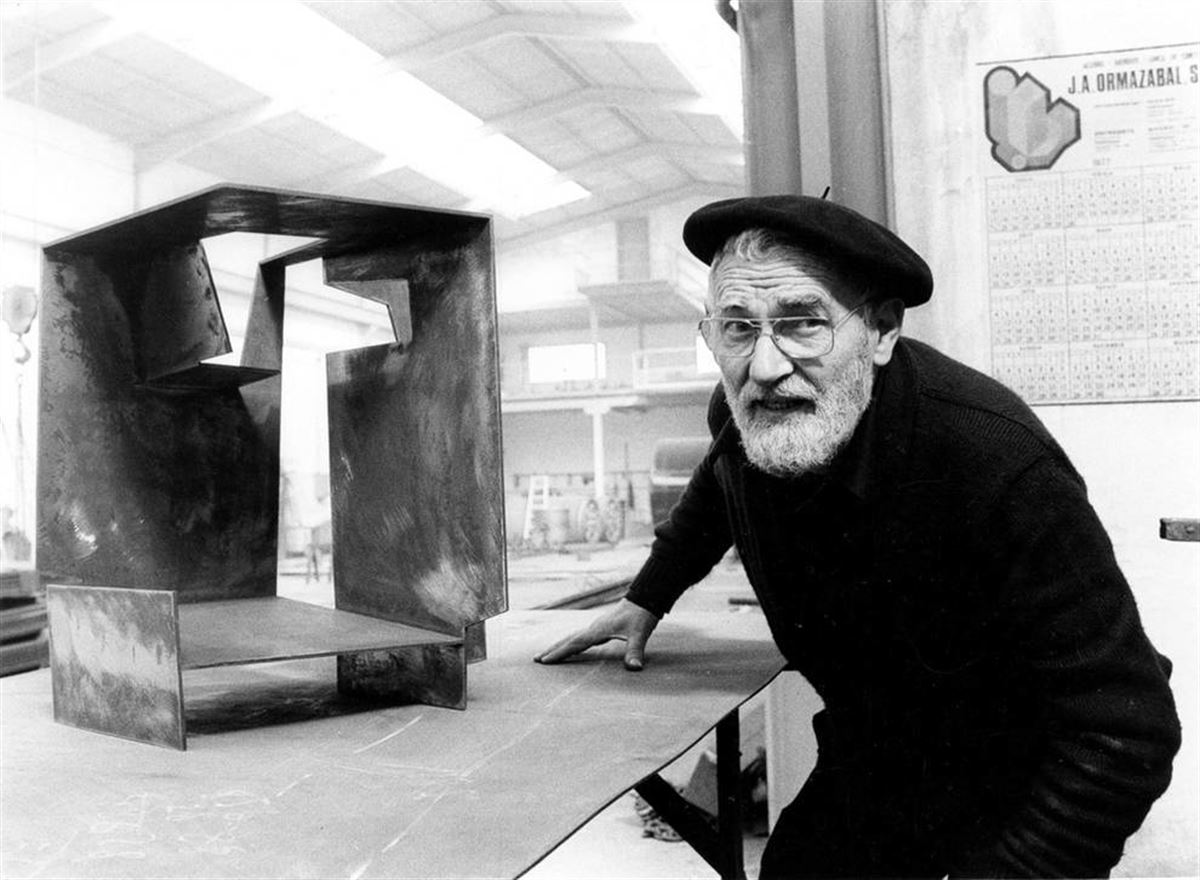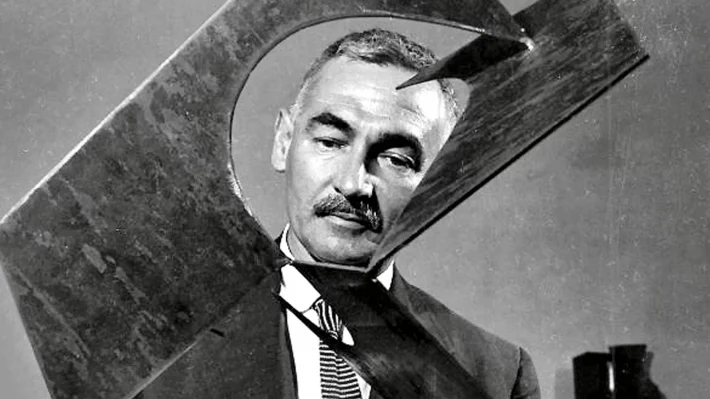Monday March 11, 2024 ICRE organizes a new session of Cinema and Sculpture. On this occasion, a documentary will be shown on the sculptor Jorge Oteiza, one of the fundamental Basque artists of the 20th century.
IMPORTANT: Because the room has a limited capacity, there is a need to have some control over the number of attendees. To do this, you will need to confirm your attendance at socis@icre.cat. This activity is free for all members, as long as the confirmation is made in advance. If you do not, you will still be able to attend (although we cannot guarantee that there will be room for everyone) by paying 5 euros, the same amount as non-members who wish to attend.
Monday, March 11, 2024 at: 7 p.m.
Vídeo Club VIDEO INSTAN
Carrer de Viladomat 239
08029 Barcelona

Oteiza 1908-2008 y sigo
Original title: Oteiza 1908-2008 y sigo
Direction: Alberto Gorritiberea and Mikel Mendizábal, 2008 Duration: 55 min.
Audio: in Spanish
Production: EiTB / Bauleko producciones
Synopsis of the film:
The directors travel to the workspaces of Basque sculptor Jorge Oteiza and ask those who knew him best about his life and work. Among those who give their testimony, his sister Carmen, 96 years old.
About Jorge Oteiza:
Jorge Oteiza Enbil (Orio, October 21, 1908 - Sant Sebastià, April 9, 2003) was a Basque sculptor, painter, designer and essayist.
He is one of the fundamental Basque artists of the 20th century. Oteiza began his artistic activity in a self-taught manner in the twenties, with works influenced by the avant-gardes of the time such as cubism and primitivism. With the intention of researching pre-Columbian sculpture, in 1934 he traveled to South America, where he stayed until 1948. Upon returning to Spain, he won a competition to create the statuary for the Basilica of Our Lady of Arantzazu, in Oñate (Guipúzcoa). It was a controversial work, in which Oteiza put into practice his theory on the weakening of figurative expression, and the Church forbade him to carry it out. He couldn't
finish until 1968.
In the fifties, and with an experimental work inherited from constructivism, Oteiza renounced figuration and began a marked process of emptying and emptying the mass that would lead him to a vertical and light sculpture: the "transstatue", in words by the same artist. The research in the environment of basic geometric volumes such as the cube, the cylinder and the sphere, and the dialogue with light and shadow, articulated a line of work that, in 1957, Oteiza described as "experimental purpose ». This project was awarded the First Sculpture Prize of the São Paulo Biennial in 1959. After this recognition and at the moment of maximum creative maturity, he decided to abandon sculpture to devote himself to conceptual and theoretical issues . He declared himself a "metaphysical worker". In the seventies, he recovered the sculptural practice working in small-format works and with materials such as plaster, paper, aluminum and cardboard.
With a prolific written work, Oteiza exhibited his sculptures in multiple collective and individual exhibitions. The two great anthologies Propósito experimental, held in Barcelona, Bilbao and Madrid (1988), and Oteiza stand out. Mito y modernidad, celebrated at the Guggenheim Museum in Bilbao and New York (2004) and at the Museo Nacional Centro de Arte Reina
Sofia (MNCARS) from Madrid (2005). In 1988 he was invited to the Spanish Pavilion at the Venice Biennale and in 2007 he was included as a reference artist within the framework of the question Is Modernity our Antiquity? at the XII Documenta in Kassel. His work is in collections such as the Solomon R. Guggenheim Museum in New York, the MNCARS in Madrid, the Juan March Foundation in Palma, the Guggenheim Museum in Bilbao and the MACBA in Barcelona, among many others.


 Català
Català Español
Español